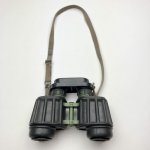Thank you all, i think i got it now |=)|
Ceasar, no doubt there is enough potential in the german language to confuse non german speaking people aswell. :-O
Yep, English is very easy to learn ... if you're a 10th generation American. But, "their," "there," and "they're" sound the same but mean entirely different things, as does "your" and "you're." Nothing is hard if you know how to do it.
I'm fighting the NATIONAL networks over the incessant use of the redundant "FOR free," which is incredibly poor grammar. And the use of "vintage" on binocular forums when, what is really meant—most of the time—is OLD!
Likewise, sharp, tack sharp, crisp, brilliant, clear, crystal clear, hazy, fuzzy, muted, grainy, washed out, etc. are terms binocular observers use every day and which flourish at birdathons, star parties, around hunter's campfires, and on the Internet. But, although they're terms we use so frequently, they have no clinical meaning in optical engineering parlance wherein all things must be quantifiable and where degrees of "resolution," "saturation," and "contrast" rule the roost.
And, what constitutes "decent," "good," "better," "best," "great," or "dependable" when speaking of binoculars?
Don't you wish we all spoke the same language? But, for that to happen we would all have to have the same understanding ... don't hold your breath. :cat:
Bill





